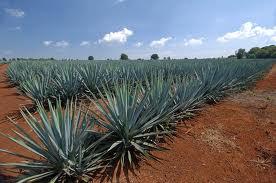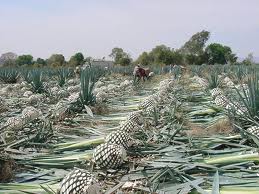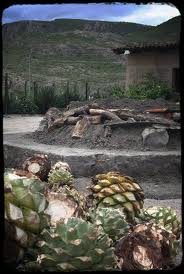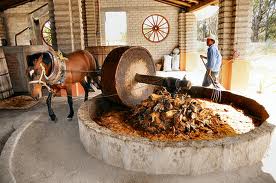I first published this post in 2012. At the time, mezcal was little known. And while the battle for recognition is still uphill, mezcal is far more popular today than it was back then. Since 2012, mezcal sales are up almost four times, and the vast majority of bars, restaurants and liquor stores, carry at least one brand.
I still spend a lot of time spreading the gospel of mezcal, and more times than not, the conversation begins with the comparison of mezcal to tequila. I use it as an opener at cocktail parties. I just walk up to a random person and ask them “Do you know what the difference is between tequila and mezcal?” They usually turn and walk away. OK, maybe that is not the way it goes down, but it could happen that way!
But this question usually is the starting point when people are curious about mezcal. In many ways, mezcal can best be understood by simply tasting it next to tequila. What will you find? Most notably, you will find mezcal to be smoky by comparison. Intense and smoky like a campfire to some, or subtle and gentle to others. The person who finds the smoke to be light is usually a scotch, bourbon or whiskey drinker, and is used to bold spirits. If you find mezcal to be intensely smoky, there is a good chance you are not accustomed to drinking spirits neat.
This post gives you the basics, but if you really want to understand and appreciate what separates mezcal from tequila, you need to read my book Holy Smoke! It’s Mezcal! (shameless self-promotion perhaps, but hey, the blog is free so this is my form of selling ad space!). The book is available on Amazon. Notice the cool cover shot to the right. Buy a copy – I promise you won’t be disappointed! Now back to our regularly scheduled program…
I believe that for most people tequila leads to mezcal (even though all tequilas are mezcals, but we will come back to that). Tequila leads to mezcal because for most of us, it started with tequila. We traveled down a path that likely started with bad tequila, bad experiences, and bad results the next morning. Then we slowly found our way back to the good 100% agave tequilas that started showing up in the 90’s. And maybe we enjoyed the extra anejos that move tequila toward cognac. And then, what? What else is out there? Ahhh mezcal….I’ve heard about that. The rise of the extra anejos coincided with the arrival of fine mezcals and then they started to appear on the shelves at your local liquor store and on the cocktails menus of your favorite gin joints. So tequila brought us to this point and now mezcal joins the discussion….
There are three key reasons why mezcal is different from tequila:
- Tequila and mezcal are produced in different states of Mexico (though there is overlap).
- Tequila can only be made, by law, with one variety of agave: the Blue Agave. Mezcal can be made with upwards of 50 varieties of agave, though most are made with the Agave espadin.
- The production process for mezcal is different from tequila which leads to a distinctly different flavor profile for mezcal.
Tequila and Mezcal are Produced in Different Regions
First, you must know that all tequilas are mezcals. Mezcals are any agave-based liquor, and therefore tequila is a subset of mezcal produced in specific regions of Mexico and made only from the Blue Agave. Tequila is made in 5 specific regions: Jalisco, Michoacan, Guanajuato, Nayarit, and Tamaulipas. Jalisco is definitely the center of the tequila universe and where the town of Tequila (yes, there is a town named Tequila) is located.
Mezcal is made in 9 specific regions of Mexico: Oaxaca, Durango, Guanajuato, Guerrero, San Luis Potosi, Tamaulipas, Zacatecas, Michoacan, and Puebla. Oaxaca is the center of the mezcal world, as about 80%% of mezcals are made in Oaxaca. In the summer of 2018, 3 new states were provisionally approved to produce mezcal (México, Aguascalientes, and Morelos). The extension of the mezcal Denomination of Origin to these states is currently being challenged, so they may or may not make it to official status.
Tequila and Mezcal are Made From Different Varieties of Agave
Tequila must be made from the Blue Agave. Mezcal, on the other hand, can be made from more than 50 varieties of agave, including the Blue Agave. See my previous post on How Many Agave Varieties Can Be Used To Make Mezcal for a lengthy, and some say fascinating (maybe that’s just me) discussion. But know that most mezcals are made from the Agave Espadin, which is the most prevalent agave variety found in Oaxaca.
The Production Process is Different
You’ve seen agave plants, right? They have these long spear-like leaves. At harvest, the leaves are sheared off by the jimador (the person doing the harvesting) who uses a coa, a long-handled stick with a sharp, flat blade at the end. Once the leaves are off, what is left is called the “pina” because it looks like a large pineapple.
They have these long spear-like leaves. At harvest, the leaves are sheared off by the jimador (the person doing the harvesting) who uses a coa, a long-handled stick with a sharp, flat blade at the end. Once the leaves are off, what is left is called the “pina” because it looks like a large pineapple. 
Up until this point, a tequila harvest and a mezcal harvest is essentially the same (with different varieties of agave). How the pina is cooked is where the process differs dramatically.
With tequila, the pinas are cooked in large industrial ovens, known as autoclaves, which are large, stainless-steel industrial pressure cookers. (note: there are other methods of cooking and crushing the pinas but this is the most common). Then the cooked agave is shredded and fermented blah blah blah. So uninteresting. So industrial. So mass production. So boring! (Can you feel the mezcal bias brewing?)
With artisanal mezcal, the process is much more handcrafted and follows the process that has been used for hundreds of years. I stress the word “artisanal” because some mezcals, like Kimo Sabe (which sucks, by the way), use a very industrial process much like a mass-produced tequila. But the premium mezcals, which I regularly discuss on this blog, use the traditional production method. With artisanal mezcal production, the pinas are cooked in an underground, earthen pit. The pit is typically about ten feet wide and t en feet deep, and cone-shaped down to the bottom. It is lined with volcanic rock. A fire is started in the bottom with wood. This fire burns to the embers heating the volcanic rocks to extreme heat. The pinas are then piled into the pit and covered with about a foot of earth. This underground “oven” now smokes, cooks and caramelizes the pina over a multi-day cooking process. The picture on the left here shows a covered pit and the pinas are cooking beneath the earthen mound. The pinas in the foreground are for show (or perhaps, they are just happily waiting their turn at glory to be smoked and turned into glorious mezcal!). It is largely this underground baking process that imparts the smoky flavor to a mezcal.
en feet deep, and cone-shaped down to the bottom. It is lined with volcanic rock. A fire is started in the bottom with wood. This fire burns to the embers heating the volcanic rocks to extreme heat. The pinas are then piled into the pit and covered with about a foot of earth. This underground “oven” now smokes, cooks and caramelizes the pina over a multi-day cooking process. The picture on the left here shows a covered pit and the pinas are cooking beneath the earthen mound. The pinas in the foreground are for show (or perhaps, they are just happily waiting their turn at glory to be smoked and turned into glorious mezcal!). It is largely this underground baking process that imparts the smoky flavor to a mezcal.
The artisanal mezcal process continues once the pinas are cooked and unearthed. The crushing process for the agave is traditionally done with a tahona (pictured here). Yes, it is a horse or donkey pulling a large stone wheel around in a circle. You see the cooked agave being crushed in the center of the wheel. This is cool, hand-crafted stuff! This entire process basically happens on a farm (or “palenque”) and is overseen by a Master Mezcalero. So when you see a premium mezcal for $50, $100, or even $200 a bottle, know that you are paying for a bottle of drinkable art that has been made this way since the 1600’s. And if someone says, “I can’t believe you paid $100 for a bottle of mezcal!” Just smile, pat them on the head, and call them grasshopper.
crushing process for the agave is traditionally done with a tahona (pictured here). Yes, it is a horse or donkey pulling a large stone wheel around in a circle. You see the cooked agave being crushed in the center of the wheel. This is cool, hand-crafted stuff! This entire process basically happens on a farm (or “palenque”) and is overseen by a Master Mezcalero. So when you see a premium mezcal for $50, $100, or even $200 a bottle, know that you are paying for a bottle of drinkable art that has been made this way since the 1600’s. And if someone says, “I can’t believe you paid $100 for a bottle of mezcal!” Just smile, pat them on the head, and call them grasshopper.
So that, my friends, is why mezcal is different than tequila at a basic level. Of course, there is much more to it if you start talking about culture, history, CRM vs. CRT, and the list is longer still. But the above list of three key differences will have you more informed than 99% of the population.


[…] goodness moment. Told you, I’m a total sucker… To read more about Mezcals, check out MEZCAL PhD Today’s cocktail muddles fresh Hothouse cucumbers (the only kid worth buying at the grocery […]
[…] and taking a boat to the Marietta Islands 15:40 Tequila– La Cofradia and Carlos Santana 16:21 Mezcal PHD–what’s the difference between tequila and mezcal? [18:18] OMG. Smoked Marlin tacos at […]
Hi,
So for pinas that are cooked in the autoclave, does the resulting mezcal not have a smoky flavor? Can that be used to determine if a mezcal if artisan or not? Thank you for your time!
Only industrial mezcal producers use autoclaves, and their stuff is mostly barely drinkable and not the artisanal mezcal many of us love. Autoclaves do not produce any smoky flavor – just heat and pressure to extract the juices. If you are looking for mezcal that is artisanal see my blog post called Starter Kit – much good stuff there!
I wish this author gave correct nomenclature and spelling in it’s truest form and knew how and when to apply the “tilde’ …..at this rate it seems to become just a laymans simple translation at best . Phhhhht !
I don’t mind the criticism, but you are incorrect that this is a translation. This is my original content. Sadly, I have no game in Spanish, but yes I could be better at using tildes, etc. But I do this for fun for free, and it does take a lot of time. If you want to start paying me to be more exacting, I’m in! Try to enjoy the content and get past the minor cross-border clerical errors! There are no errors in the content.
Hey Kazmin, This is for informational purposes only… not a scholarly paper. I found it very informative and interesting. Thank you Mezcal PhD
I love this post! I declared 2017 my Year of the Mezcal because I am just waking up to how fabulous it is. This helped me understand the differences and where that amazing smokey flavor comes from. Thank you!
My pleasure. Enjoy the journey!
“With artisanal mezcal production, the pinas are cooked in an underground, earthen pit. The pit is typically about ten feet wide and ten feet deep, and cone shaped down to the bottom. It is lined with volcanic rock. A fire is started in the bottom with wood. This fire burns to the embers heating the volcanic rocks to extreme heat. The pinas are then piled into the pit and covered with about a foot of earth. This underground “oven” now smokes, cooks and caramelizes the pina over a multi-day cooking process.”
Sounds very much like cooking cow head that my friend Humberto (native of ‘old Mexico’) described to me. We worked together years ago in Toledo, Ohio where he had to cook the cow head in the oven of his apartment. He did get the eyes because he was the Dad at that time. 🙂
Thanks for your very interesting article. I look forward to trying Mezcal.
Well OK then! Very funny. The image of the cow’s head in the oven in the kitchen is one to savor. Thanks for the note!
Ahh, your Mexican friend was talking about Barbados. This wonderful Spanish dish celebrated primarily on Sunday and is part of a feast. Find yourself a good Mexican grocery where they make it on Sunday. Be prepared to stand in line on Sunday morning with the locals. You won’t be sorry.
I have been fortunate enough for to have a wife from Oaxaca. We recently came back from Oaxaca and had to oportunity to visit palenques and see the whole process. Mezcal is more than a drink, it’s art, and an amazing experience. I have always loved mezcal but seeing and tasting it from the source and learning about the traditions and culture of Oaxaca made me truly understand the why is so unique. The biggest thing is to not drink it like tequila shots in one sip, but to enjoy every sip you take. Thank you for spreding the word. I highly recommed Sinai Mezcal. Salud.
I agree with all you say. Well said. I have not heard of Sinai or seen it in Oaxaca, but I will be on the look out. Thanks for contributing!
I had the same experience…been drinking premium tequila for many years and just found mezcal. My latest purchase was Mezcal xicaru…I just tried it for the first time and fell in love. Any other mezcal recommendations?
Check out my blog post – Mezcal Starter Kit. That will give you a long way to run! Thanks for contributing. I think you can do a lot better than Xicaru with most of the mezcals on that list. Drink mezcal!
I am glad I found this informative site. Good reading.. Thanks! I am a long time tequila fan but never tasted mezcal until El Jolgorio on a business trip to Mexico last month. Wonderful stuff in my opinion. My only exposure to mezcal until now was a bottle of Cusano Rojo that my grandfather brought me from Oaxaca back in the 1950’s or 60’s that I never opened because I was warned it tasted like gasoline and was advised to stay far away from all Mezcal. However, I still keep it in my office because it is the only memory I have of g-pa, aside from a single old photo.
A neighbor just returned from visiting her family for the holidays in Zacatecas and brought me a bottle of La Pendencia Mezcal Reposado and said it is the most popular mezcal in her town. Have you tried that one by chance?
That’s a great memory to have of him and you are doing him a great honor not opening that bottle! You started your new mezcal experience in the right way – El Jolgorio is one of the best brands for sure. I have not heard of La Pendencia, but if it does not have a worm in it that is a good start. Let me know how it goes! Thanks for writing in and let’s raise a glass to grandpa…..
I really like Islay Scotch, and have recently learned that I love really smoky Metcalf. Can you suggest some super smoky, earthy mezcal in the $35- $55 range? I live in Montana, so don’t have the best selection, so add many add you can think of off the top of your head would be very appreciated!
Read my post on Mezcal Starter Kit. Lot’s of good suggestions there in that price range. They will likely all taste smoky comparatively to Scotch…..enjoy!
I just bought my first bottle of Mezcal in Cozumel last month. Instantly fell in love with the Smoky taste and found this article about the difference of tequila and mezcal.
Mine is El Senorio-Jovan Con Gusano. To me it is absolutely delicious and will have a hard time going back to Tequila. Cannot find it in any of our liquor stores to compare price. I paid a whopping $12 a bottle in Cozumel and don’t know why I bought 4 bottles never having it before but happy I did.
Awesome that you have discovered mezcal! Anything with a worm in it is generally an industrial mezcal and in the view of most people (present company included) nowhere close to as good as artisanal, hand crafted mezcals. I know El Seniorio and it is definitely industrial. And so I would suggest you look at my Mezcal Starter Kit post and try some of those mezcals. If you still like El Seniorio after that, more power to you. Drink what you like to drink not what other people tell you is good!
A friend gave me something called ” Minero” which seems to be a kind of Mezcal. Tastes very smokey and delicious. Would you drink it straight or with a lime. I doubt it’s a mixer but curious
Can you take a picture of the bottle and send it? It may be a mezcal but does it say “mezcal” on the label? Or anything else like “destilado de agave”? At any rate, if it is delicious, I would drink it straight. No lime. No salt. No ice. But you should drink it however you like! No judgments….
Do you think any of the tequilas under the Kirkland brand that Costco sells are worthy of having in a liquor cabinet?
I have no idea. I would give it a try if you are curious, and if you like, perfect!
[…] Mezcal vs Tequila […]
[…] of tequilas, including the 100% pure agave ones, which is what you really want to drink, and even a mezcal or two. Most of them will run upward of 30€. For something just as good but at almost half the […]
Thanks! I’m enjoying some Vida Mezcal at this very moment. Loved your article.
Glad you liked it. Read my Starter Kit post for more tips on entry level mezcals!
I have a substantial collection of Tequila’s I purchase (generally) at the Tequila Festival in T.J. each year. Yesterday my neighbor brought over a bottle of Taberna Los 3 Hombres (Raicilla Blanco)…..nice stuff! I need to explore Mezcal types more!! Living near Ensenada.
I would love to try that raicilla! Thanks for sharing!
Do you recommend a first time mezcal? Thinking of trying it in a Bloody Mary but don’t want something cheap nor super expensive…
Look at my post called Starter Kit. That will lead the way….
Thanks!
Hmmmmmmm; I make an excellent Bloody Mary and enjoy a good one elsewhere, however i cannot picture anything from an Agave plant in that mix. Kinda like trying to make a Bloody Mary with Clamato – just not the same! haha
Try it with mezcal….you’ll never go back!
I have! Vodka and Mezcal are too different for that drink (for me)…
Didn’t find any decent Mezcal on my trip, the only Mezcal I could find was Gusano Rojo.
As for the Del Maguey, I’ve been saving those for when my son gets married, or gets his Masters Degree. I think the degree is more likely, LOL. If I change my other mind I’ll let you know.
Cheers!
Gusano Rojo? Ugh. Sorry to hear that. And definitely let me know if you want to unload vintage DM!
[…] But, if you want to read about them (Mezcal mostly), check out this dude's website. […]
Highly informative blog, much appreciated.
I’ve been a Mezcal fan for many years, still have a few unopend bottles of Del Maguey from the late 90s.
Heading to the Quintana Roo region on Monday and hoping to score some good Mezcal. Any recommendations would be appreciated.
Cheers!
Glad you like the blog! Unopened bottles of Del Maguey from the late 1990’s? Any interest in selling them?